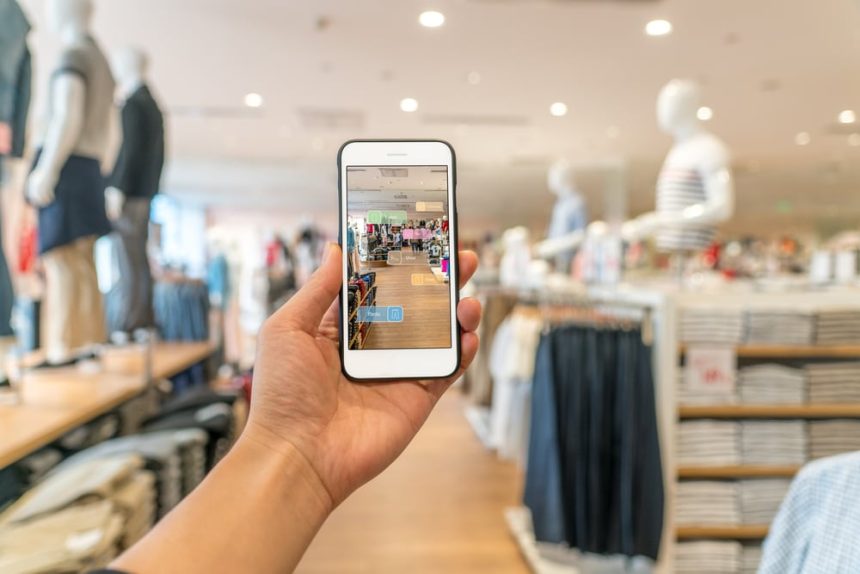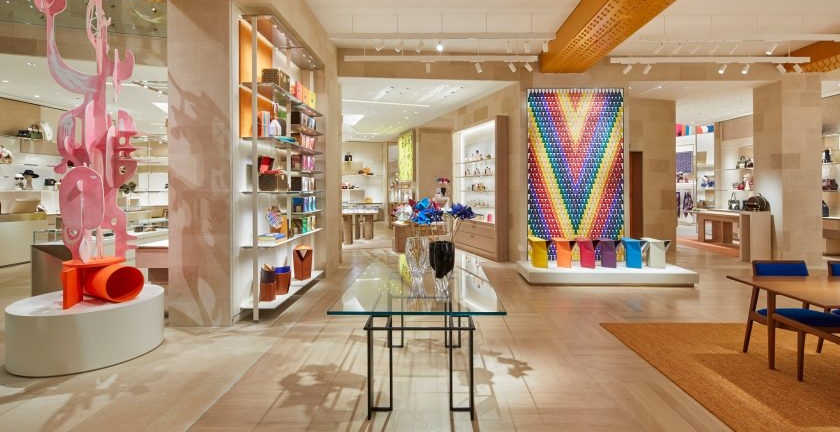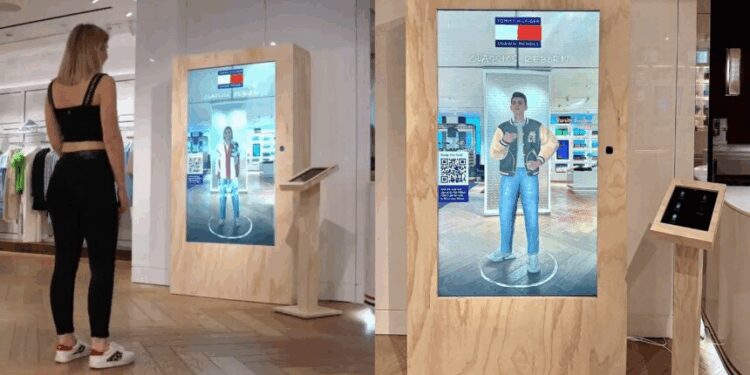The luxury fashion world has always been a pioneer of innovation, from haute couture craftsmanship to revolutionary retail experiences. Today, it’s undergoing another paradigm shift the integration of Augmented Reality (AR). As digital technology seeps into every aspect of our lives, the luxury industry is embracing AR not as a gimmick, but as a powerful tool to reshape consumer experiences, brand storytelling, and even product development.
In this comprehensive article, we’ll explore how AR is revolutionizing luxury fashion, the benefits it brings, real-world use cases, key technologies driving this transformation, and what the future holds for this high-tech fusion of elegance and engineering.
What Is AR in Fashion?
Augmented Reality (AR) is a technology that overlays digital content such as images, animations, or data onto the real world through a device like a smartphone, tablet, or smart glasses. In the context of fashion, AR allows users to see virtual clothing, accessories, or styling elements on themselves or their environment in real time.
Whether it’s a virtual try on mirror in a flagship boutique or an Instagram filter that adds a designer bag to your outfit, AR is offering a blend of physical and digital experiences that were once unimaginable.
Why Luxury Brands Are Embracing AR
Luxury fashion has a unique set of goals: it doesn’t just sell clothes it sells identity, aspiration, and exclusivity. AR is helping brands achieve this through:
A. Enhanced Customer Experience
AR enables interactive experiences, such as trying on items virtually or visualizing products in 3D before purchasing. This is particularly valuable for online shopping, where physical trial is impossible.
B. Emotional Engagement
Luxury is about storytelling. Through AR, brands can create immersive narratives, placing customers in virtual environments like runway shows, design studios, or iconic brand locations.
C. Sustainability and Innovation
By using AR for digital sampling and virtual fittings, brands can reduce waste associated with physical samples, returns, and overproduction.
D. Competitive Differentiation
In a crowded market, AR offers luxury labels a way to stand out through innovation while appealing to tech-savvy Gen Z and Millennials.
Applications of AR in Luxury Fashion
Let’s explore the wide range of use cases where AR is already making waves in high-end fashion.
A. Virtual Try-Ons
Customers can use AR apps or in-store mirrors to try on clothing, shoes, sunglasses, or accessories without physically wearing them. This eliminates the need for changing rooms and enhances convenience.
Examples:
-
Gucci allows users to try on sneakers using the Gucci App.
-
Dior offers AR try ons for sunglasses via social media filters.
B. Interactive Fashion Shows
Virtual AR runway shows enable brands to broadcast their collections globally without requiring a physical audience. Viewers can experience shows from home through immersive AR headsets or mobile apps.
Examples:
-
Balenciaga released an AR fashion experience through a video game environment.
-
Burberry collaborated with Apple to stream AR-enhanced shows to iOS devices.
C. AR Shopping Experiences
Luxury boutiques are implementing AR to create interactive in store experiences. Customers can scan QR codes or use in-store tablets to view products in 3D, access detailed craftsmanship videos, or explore alternative colorways and styles.
D. Virtual Showrooms and Pop-Ups
With travel and physical events limited, brands are building AR showrooms accessible via the web or mobile apps, letting users walk through collections virtually and interact with pieces as if they were in a physical space.
E. Gamification and NFTs
AR fashion is blending with the metaverse and NFTs (non-fungible tokens), creating digital garments that users can wear in video games or virtual platforms. These exclusive items often come with real-world counterparts, building a bridge between virtual and physical fashion.
Technologies Powering AR Fashion
Behind the scenes, several advanced technologies drive AR experiences in fashion:
A. 3D Scanning and Modeling
Clothing and accessories are scanned or digitally created to produce lifelike 3D models that can be rotated, resized, and animated in AR environments.
B. AI-Powered Fit Technology
Artificial intelligence enhances AR by using body scanning and fit prediction algorithms to ensure garments appear as they would in real life.
C. Real-Time Rendering
High-performance rendering engines allow smooth, realistic visuals with shadows, textures, and movements that mimic actual fabric behavior.
D. AR Platforms and SDKs
Companies like Snap Inc., Meta, and Apple provide AR development kits that luxury brands use to build custom filters, apps, and effects.
E. Cloud and Edge Computing
Fast cloud processing enables real time experiences without overloading the user’s device, making AR more accessible to the average consumer.
Case Studies: How Leading Brands Use AR
The luxury space is full of innovation. Below are examples of how iconic names are integrating AR into their customer journeys.
A. Gucci
-
Developed a virtual try on feature for sneakers and watches using its app.
-
Launched AR filters on Snapchat and Instagram that replicate its products.
B. Louis Vuitton
-
Created an AR app that allows users to place monogram trunks in real space.
-
Explored AR installations in pop-up stores for immersive storytelling.
C. Prada
-
Invested in digital dressing rooms powered by AI and AR.
-
Partnered with tech firms to test holographic fashion shows.
D. Balmain
-
Released digital avatars wearing AR rendered fashion on social media platforms.
-
Experimented with AR collaborations in virtual fashion week campaigns.
E. Burberry
-
Implemented Google AR search results, allowing shoppers to preview items at home.
-
Used AR to enhance in store storytelling and product transparency.
Benefits for Consumers

The use of AR in luxury fashion doesn’t only benefit brands. Consumers are enjoying a more personalized, immersive, and efficient shopping journey.
A. Convenience
No more crowded dressing rooms or returns from poor sizing AR helps shoppers visualize fit and style instantly.
B. Confidence
Seeing a product in real-time helps reduce doubt, resulting in fewer abandoned carts and more satisfied purchases.
C. Personalization
AR adapts experiences based on user data, delivering tailored recommendations and interactive features.
D. Engagement
Customers feel more connected and entertained, encouraging longer browsing sessions and brand loyalty.
Environmental and Ethical Impact
AR isn’t just a tech trend it’s a tool for sustainability in luxury fashion.
A. Reducing Waste
Digital prototypes and virtual fittings mean fewer samples are produced, cutting material waste and carbon emissions.
B. Lowering Returns
Improved visualization reduces the number of returned items, which are often discarded rather than resold in luxury fashion.
C. Promoting Digital Fashion
As digital fashion grows, AR could eventually replace physical garments for certain use cases, such as content creation or social media styling.
The Rise of Digital Only Luxury Fashion
A new frontier in AR fashion is purely digital clothing, which exists only in the virtual world. These garments are worn through AR filters, in metaverse environments, or in virtual content.
Notable Developments:
-
The Fabricant, a digital fashion house, collaborates with brands to create wearable AR fashion.
-
DRESSX offers virtual clothing rentals for social media, reducing fast fashion consumption.
-
Dolce & Gabbana and Givenchy have released NFT-based digital wearables, selling for thousands of dollars.
This shift toward non-physical luxury fashion aligns with changing consumer habits, where status symbols are now just as important in digital spaces as they are in real life.
Challenges in AR Fashion Integration
Despite its promise, there are hurdles to widespread AR adoption in luxury fashion.
A. High Development Costs
Creating accurate and engaging AR experiences can be expensive, especially for smaller fashion houses.
B. Tech Accessibility
Not all consumers have access to the devices or internet speed needed to enjoy AR experiences fully.
C. Privacy Concerns
AR apps often require camera and facial data access, raising data privacy and ethical concerns.
D. Quality Control
Ensuring consistent experiences across devices and platforms remains a technical challenge.
The Future of AR in Luxury Fashion

The trajectory of AR in fashion is clear it will continue to expand, mature, and transform every touchpoint of the luxury fashion ecosystem.
Predicted Trends:
A. Full Virtual Stores: AR powered shopping malls or boutiques that exist entirely in the digital realm.
B. Smart Mirrors: Widespread adoption of in store AR mirrors with integrated recommendations and digital fitting.
C. Voice & Gesture Control: Hands free AR powered by voice assistants or hand gestures.
D. Hyper-Personalization: Data driven AR that adapts product visuals and marketing content in real time.
E. Blockchain Integration: Using AR and blockchain to verify authenticity and track product life cycles.
The fusion of Augmented Reality with luxury fashion is more than a trend it is a digital evolution that enhances consumer experience, reduces environmental impact, and redefines the essence of luxury. As AR technology becomes more accessible and integrated, we can expect a future where every luxury interaction is enhanced by immersive digital experiences.
Luxury fashion isn’t abandoning tradition it’s digitizing its soul. The brands that embrace AR today are shaping not just the future of fashion, but the very nature of how we see ourselves in the world both real and virtual.












